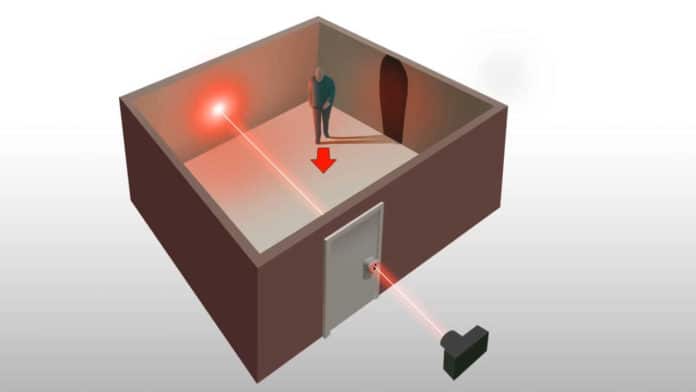Over the past few years, different techniques have made it possible to improve the viewing angles of the cameras, taking advantage of extra functionalities such as lasers. This technology allows the device to track objects moving around corners, even when they are completely obscured from view. The device could be used for search-and-rescue missions or installed on cars to detect incoming vehicles.
Now, researchers at the Stanford Computational Imaging Lab have developed a novel method called non-line-of-sight imaging, or keyhole imaging, that allows you to scan an entire room by simply pointing a laser through the keyhole. A single point of laser light entering a room can be used to see what physical objects might be inside.
Non-line-of-sight (NLOS) technique has been refined by continuous research with it in the lead role, aimed at creating cameras that image objects lying behind corners beyond the field of view. In the past, this technique used flat surfaces, such as walls or floors, that happened to be in the line of sight with a hidden object and a camera. A series of light pulses originating from the camera, usually from lasers, bounce off these surfaces and then bounce off the hidden object before eventually making their way back to the camera’s sensors.
Algorithms further analyze the collected information in order to evaluate the duration elapsed between sending and receiving the signal to generate an image of what the camera can’t see. The results aren’t high-resolution, but details are sufficiently abundant to identify what kind of object was imaged.
The new Non-line-of-sight (NLOS) technique could even see applications in cases like autonomous car navigation, assisting onboard computers as they map a local environment lying just beyond-line-of-sight for potential hazards hidden around corners, improve safety, and obstacle avoidance, especially when the passengers can’t see it.
But the current NLOS techniques have a big limitation – they need a large reflective surface that allows the light reflections returning from a hidden object to be measured.
Developed by researchers at Stanford University’s Computational Imaging Lab, the keyhole imaging technique is so named because all that’s needed to see what’s inside a closed room is a tiny hole, such as a keyhole, large enough to shine a laser beam through, creating a single dot of light on a wall inside. The latest advancement involves a laser bouncing off of a wall, then some object in the room, and then again off the wall before returning through the keyhole to a camera equipped with a single-photon avalanche photodetector to measure the timing of their return.
Although on this basis, even a static object was unrecognizable, researchers solved this problem by trying to image a moving object with pulses of light from a laser capable of generating enough usable data during a longer exposure time to provide enough information for an algorithm to build an image of the object.
The technique resulted in even worse quality images than the earlier NLOS techniques, but it still provides enough detail to make an educated guess on the size and shape of the hidden object. For example, a wooden mannequin ends up looking like a ghostly angel, but when paired with a properly trained image recognition AI, determining that a human-shaped object was in the room seems very feasible.
The research could one day provide a way for police or the military to assess the risks of entering a room before actually breaking down the door, using nothing but a small crack in the wall or a gap around a window or doorway.
